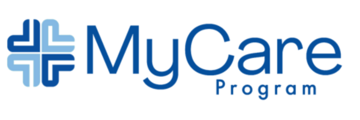Brief Overview:
Raynaud's phenomenon is an exaggerated vascular response to cold temperatures or emotional stress, manifested clinically by sharply demarcated color changes of the skin of the digits (fingers, toes). It is thought to be caused by abnormal vasoconstriction of digital arteries and cutaneous arterioles due to a local defect in normal vascular responses.
Prevalence:
Raynaud’s affects an estimated 3-5% of the general population.
Etiology:
Raynaud’s can be primary (idiopathic) or secondary to another underlying condition, often autoimmune or connective tissue-related. Primary Raynaud’s has no identifiable cause. Secondary Raynaud’s is associated with diseases such as systemic sclerosis (SSc: scleroderma) or lupus (SLE).
Risk Factors:
- Female sex
- Age (typically under 30 for primary Raynaud’s)
- Family history, genetics
- Smoking
- Occupational exposure to vibrations, repeated actions that can cause overuse injuries, or living in a cold climate
- Injuries to the hands or feet
- Certain medications – like beta blockers, ADD/ADHD medications, certain cancer medications, some migraine medications, etc.
- Connective tissue or autoimmune diseases (for secondary Raynaud’s)
Commonly Associated Conditions:
- Systemic sclerosis
- Lupus (SLE)
- Rheumatoid arthritis
- Sjögren’s syndrome
- Mixed connective tissue disease
- Pulmonary hypertension
- Carpal tunnel syndrome
Common Medications:
- Calcium channel blockers (e.g., nifedipine, amlodipine)
- Topical nitrates (e.g., nitroglycerin cream)
- PDE5 inhibitors (e.g., sildenafil)
- Prostaglandins (prostacyclin)
- Botox locally injected at the base of the fingers – needs more study
Common Labs, Imaging, and Tests:
- Antinuclear antibody (ANA)
- CBC with differential
- CMP
- Urinalysis with urine sediment
- TSH
- ESR/CRP (to assess inflammation)
- Nailfold capillaroscopy – typically performed by a rheumatologist or dermatologist, used to distinguish between primary and secondary RP, done by dropping oil on the periungual area and examining it with an ophthalmoscope set at diopter 40 or with a dissecting microscope
- Other techniques, tools, or tests may be used as well
Common Symptoms:
- Sudden onset of cold fingers or toes
- Color changes in the skin in response to cold or stress (white, then blue)
- Numbness, tingling, pain, or clumsiness in affected areas
- Levido reticularis – a violaceous mottling or reticular pattern of the skin of the arms and legs – this finding is benign and completely reversible with rewarming
- Ulcers or sores (in severe secondary cases)
Common Treatments:
- Medication (see above)
- Avoiding sudden cold exposure
- Help end an attack – place the hands under warm water or in a warm place (like the armpits), or rotate the arms in a whirling windmill pattern
- Stress management
- Smoking cessation
- Pharmacologic treatment to improve blood flow/avoiding medications that cause vasoconstriction when possible
- Treatment of underlying autoimmune conditions in secondary Raynaud’s
- Hospitalization may be required if an attack of RP does not resolve and if blood flow is seriously restricted and threatens the loss of a finger or toe. In some cases, surgery may be indicated.
Physical Findings:
- Color changes in digits during episodes
- Cool extremities
- Skin ulcers or thinning in severe cases
- Nailfold capillary abnormalities in secondary Raynaud’s
Potential Complications and Contraindications:
- Ulceration of the skin, in rare cases
- Deep tissue injury leading to death of the finger tissue and surgical amputation, in rare cases
- Avoid beta-blockers in Raynaud’s unless essential or prescribed by your provider, as they may worsen symptoms
- Vasoconstrictive medications (e.g., decongestants) may exacerbate symptoms
General Health and Lifestyle Guidance:
- When exposed to cold, try to keep the whole body appropriately warm (as opposed to only focusing on the hands and feet) – hand warmers, socks, layered clothing, hat. It is important to avoid overheating as well.
- Appropriate heating in the home and work environment
- Avoid smoking
- Avoid vasoconstricting drugs when possible
- Manage stress
- Avoid repeated trauma to the fingertips by patients with RP and avoid vibrating tools by patients with vibration-induced RP
Suggested Questions to Ask Patients:
- When did your symptoms start (see list of common symptoms above), and how often do they occur?
- What triggers your episodes (cold, stress, etc.)?
- Have you noticed any skin sores or changes?
- Do you have symptoms suggestive of an autoimmune disease (fatigue, joint pain/stiffness, skin problems, recurring fevers, swollen glands, digestive issues)?
- Are you taking any over the counter medications that might cause vasoconstriction (common examples are pseudoephedrine and phenylephrine, found in many OTC decongestants)? Some prescription medications can cause vasoconstriction as well (examples are epinephrine, vasopressin, triptans, midodrine, etc.). Always talk to your healthcare provider about your medications and any side effects/symptoms you may be experiencing.
Suggested Talking Points:
- Distinguish between primary and secondary Raynaud’s
- Emphasize importance of warmth and stress management
- Discuss the possibility of underlying autoimmune disease with your healthcare provider, if not already diagnosed
- Review medication options and expected outcomes with healthcare provider
- Set expectations: episodes can often be managed with lifestyle and medications but may not be completely eliminated
Sources:
